Products > Precision Components > Cold-Formed Micro-Components
Micro Electrical Contacts & Leads
As an integrated global manufacturer in design, manufacturing and services in cold heading, cold forming, roll forming, and thread rolling, MW Components produces micro-precision parts that range in quantity from relatively low volume specialized units to very high quantities in ongoing annualized production schedules. Some examples of these precision components include miniature electronic components, micro contacts, and micro leads.
CUSTOM MANUFACTURING
Custom Micro Contacts & Leads
Our customers come to MW for more than routine copper contacts; rather, they often require special alloys (e.g., hermetic seals, copper core wire, exotic alloys, oxygen-free copper), unique capabilities (e.g., micro electronic contacts for multiple functions such as contact and heat sink), or need to eliminate undesirable properties (terminal contacts, better quality contact surfaces, etc.).
Our customization capabilities are unmatched, allowing our customers countless options for non-standard shapes, sizes, and materials. And in addition to our outstanding engineering and manufacturing team, we also offer optional design, prototyping, and tooling assistance as required.
To send us your specs or configure a part, request a custom quote.
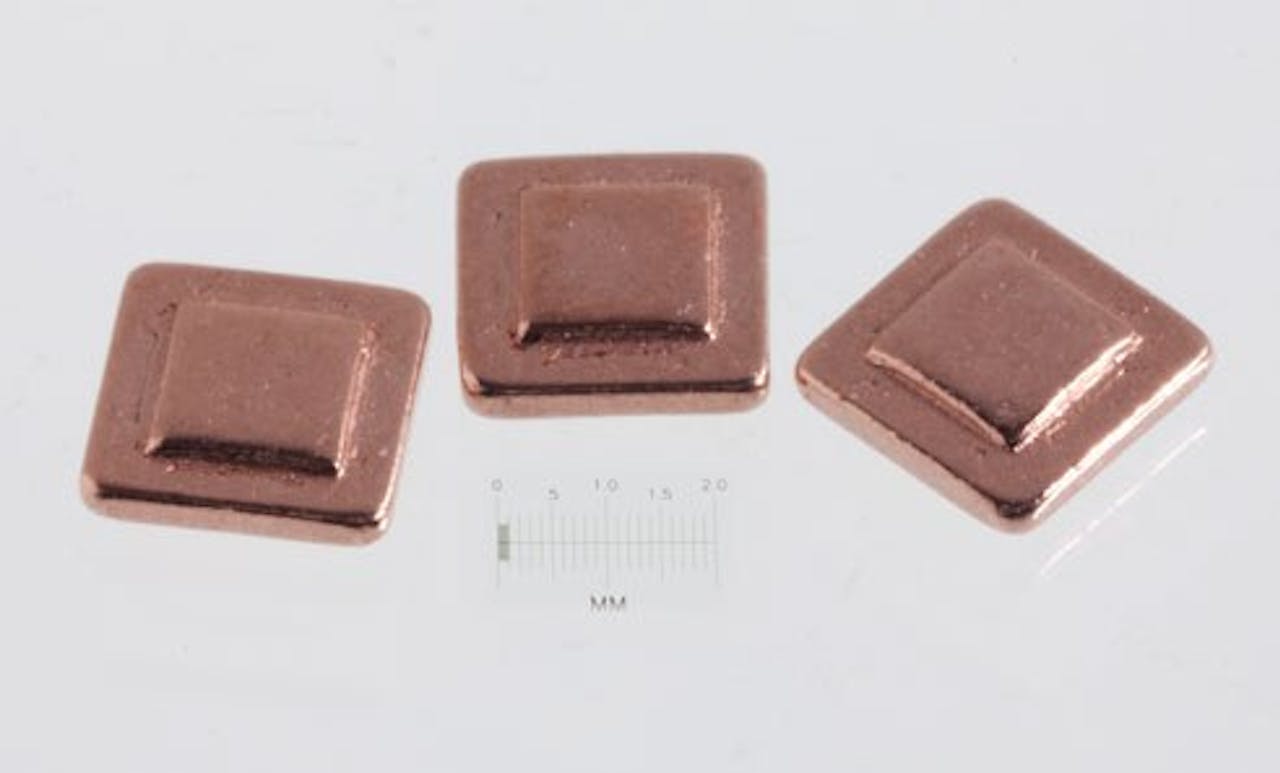
Custom Solution Examples
Miniature Plug Electrode
Material: Nickel alloy (95% Ni,2% Mn,2%Al,1%Si) (often referred to as alumel) for thermocouple applications.
Manufacturing Method:
- Formed/coined/trimmed/pierced on automatic forming machinery. The rolled undercut is a secondary process.
Notable Features:
- Coined flat (ie: flattened and pierced and trimmed area) is very thin relative to the wire OD (approx. .200" (5.1mm).
- The rolled undercut is a retention feature.
- Surface finishes are better than machining.
- This solid pin has better electrical and thermal characteristics than a hollow pin made from sheet metal.
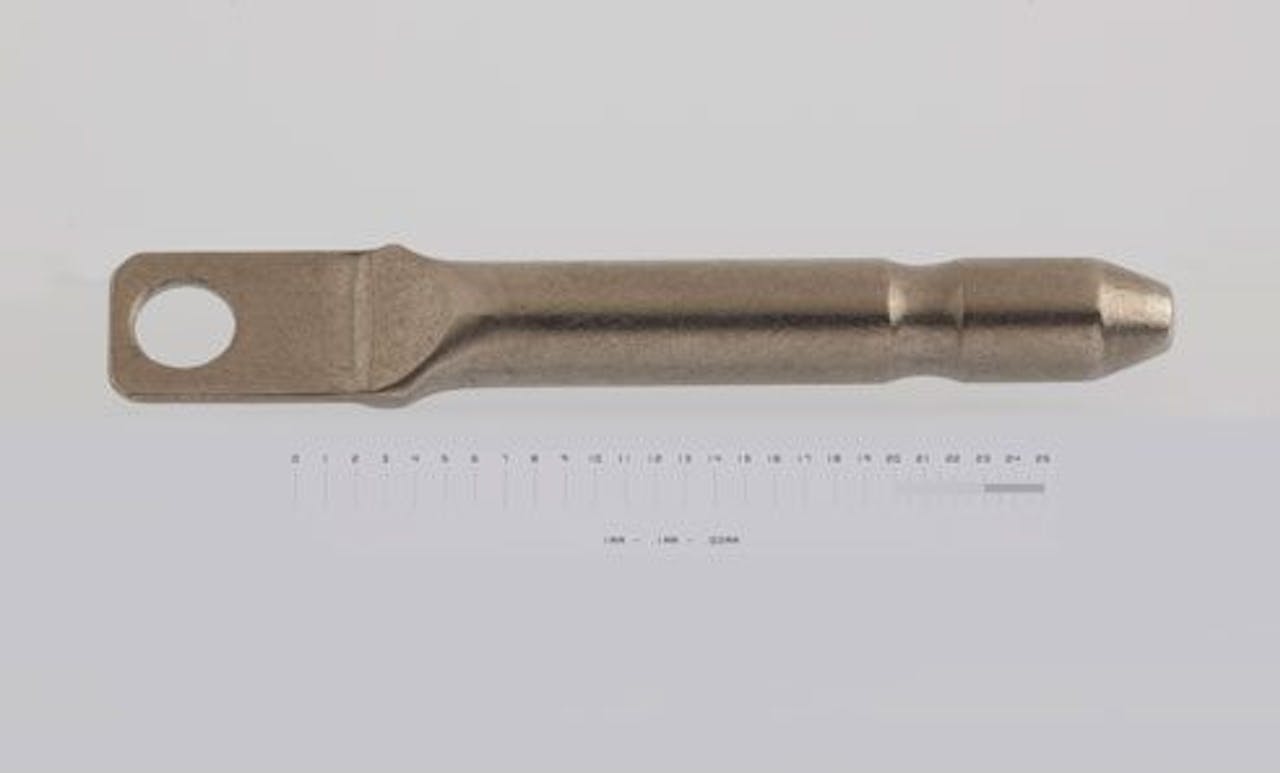
Advantages:
- Cost. Forming with a secondary rolled undercut is vastly less expensive than using a machining process. Production speeds are high for this high-volume piece allowing for low production costs.
Terminal Pins / Kovar Pins
Material: Kovar alloy per ASTM f-15 (nickel/cobalt alloy - glass to metal seal quality).
Manufacturing Method:
- Cold Forming, Multi-Die.
Notable Features:
- Very large volume head combined with small diameter shaft.
- Very high surface finish. No machining lines or machining tit present at either end of the part.
- A very good surface finish present on the sealing surfaces. No leak paths.
- Note the recessed trapezoidal shape in the top head surface.
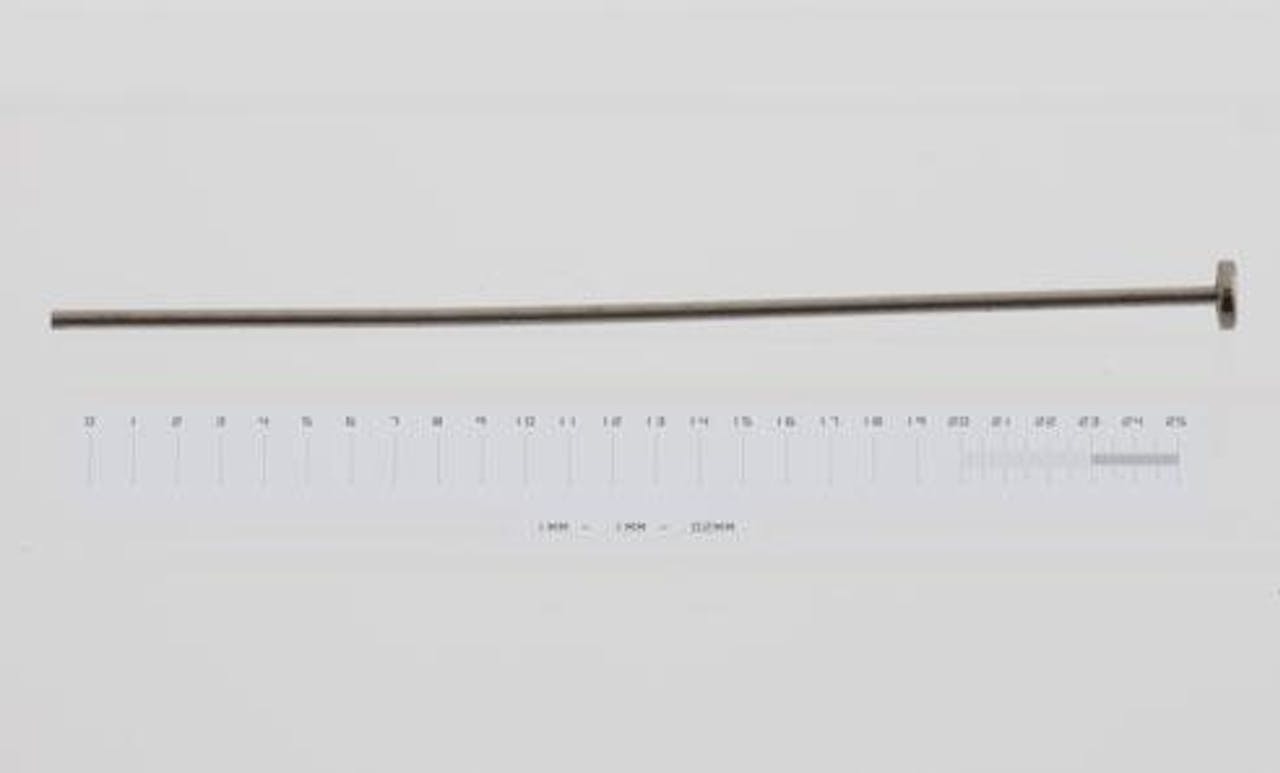
Advantages:
- Material waste is minimal.
- Normally, this component would be a two-piece welded unit combining a Kovar disc (ie: a button) with a terminal lead. This component is cold-formed as a one-piece unit therefore there is no weld/braze joint between two different pieces and no assembly error.
- Production speeds are high allowing for low production costs. Much faster than machining.
- Concentricity of all diameters is near perfect: TIR approx. .002".
- Surface finishes are smooth for good hermetic sealing characteristics. No machining marks/spirals/inclusions are present.
Connector Pin
Material: CDA 260 brass (unleaded brass).
Manufacturing Method:
- Cold Forming, Multi-Die.
- Manufactured as a complete part on proprietary designed & built cold form tooling.
Notable Features:
- Symmetrical (identical) contact points on both ends.
- Precise shape to the spring stop-headed portion of the pin.
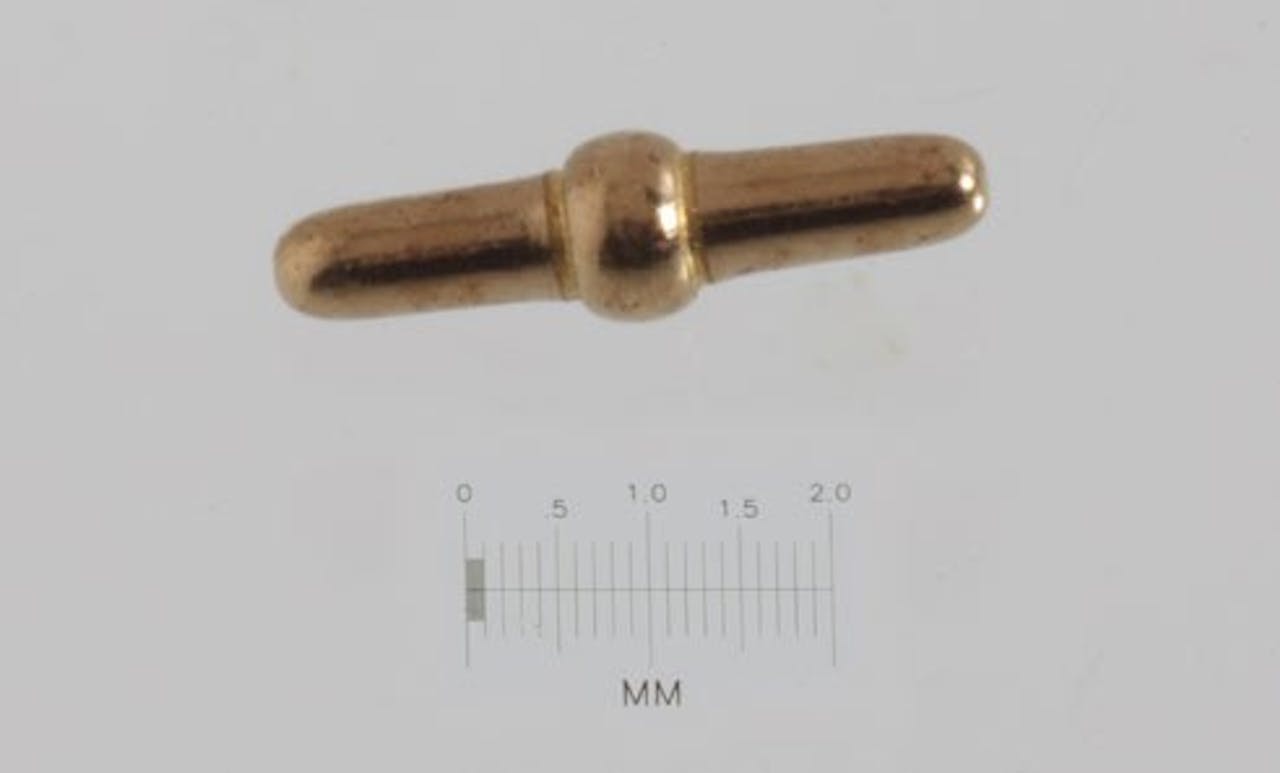
Advantages:
- Formed from a wire. No machining needed.
- Production speeds are high allowing for low production costs. Much faster than machining or turning.
Large Heat Sink & Lead
Material: CDA 102 oxygen-free high conductivity copper.
Manufacturing Method:
- Produced from coiled wire.
- Manufactured completely from cold forming machine-no secondaries.
- Tooling designed & built in-house.
Notable Features:
- This headed pin represents a large heat sink (ie: the head portion) and a small diameter terminal lead (ie: the long shaft) manufactured as a ONE PIECE design.
- Surface finishes better than 32 RMS.
- Concentricity of major OD to minor OD is .002" TIR.
- Burrless
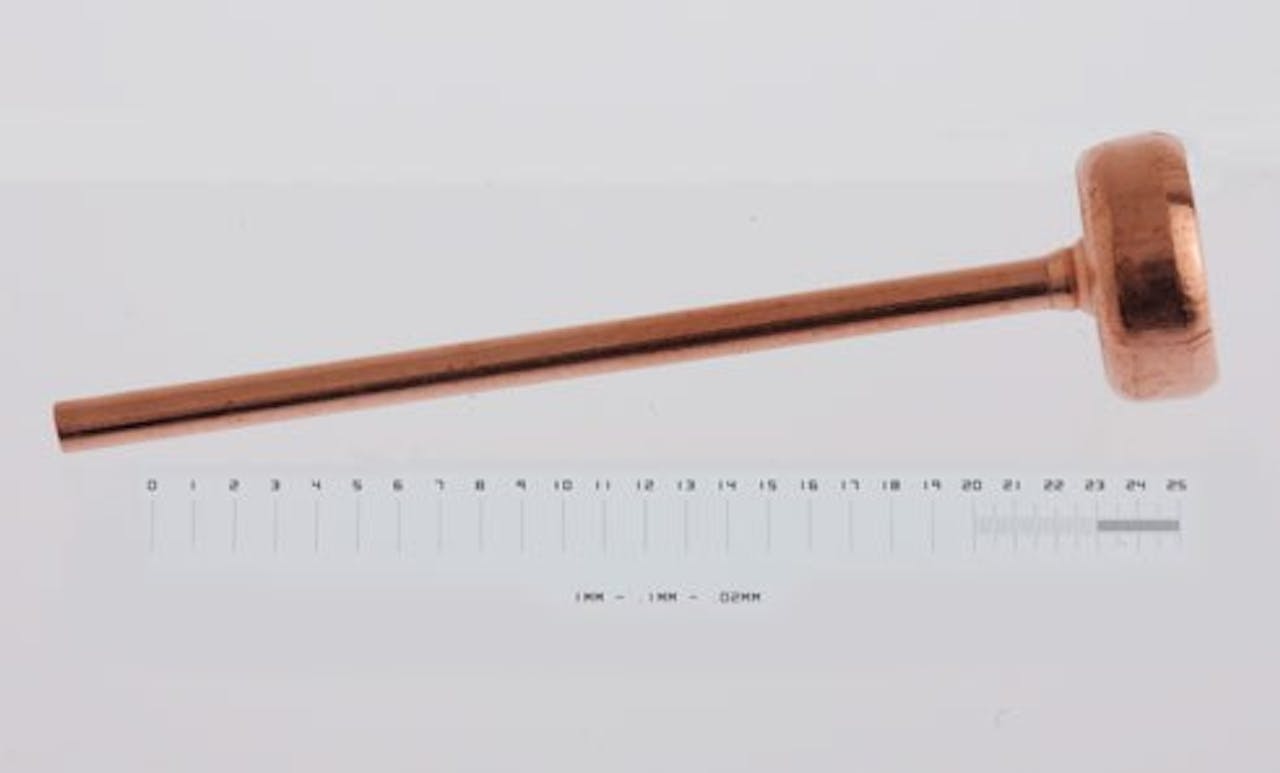
Advantages:
- No machining lines or cut-off deformations present.
- This one-piece design is meant to supplant the usual two-piece brazed assembly. Normally a part like this would be manufactured by brazing the .050" diameter terminal lead onto a larger Heat Sink. Therefore this design eliminates the braze assembly and replaces it with a single one-piece part.
- Near perfect concentricity of the terminal lead to major OD and very good thermal and electrical conductivity since there is no braze joint or weld on the part.
- A variety of shapes can be formed for the Heat Sink portion, not just the cylindrical shape, using the same forming technology and production processes. The Heat Sink portion of the part could even be shaped like a cup rather than a solid cylinder.
Battery Anode Terminal
Material: CDA 102 copper (oxygen-free; high conductivity copper).
Manufacturing Method:
- Multi-Die cold-forming, plus a three-station coining machine.
Notable Features:
- Special shaped coined (flattened) area non-symmetrical feature.
- Deep counterbore extruded blind hole.
- High surface finish as a smooth insertion feature.
- Counterbored hole has a flare feature.
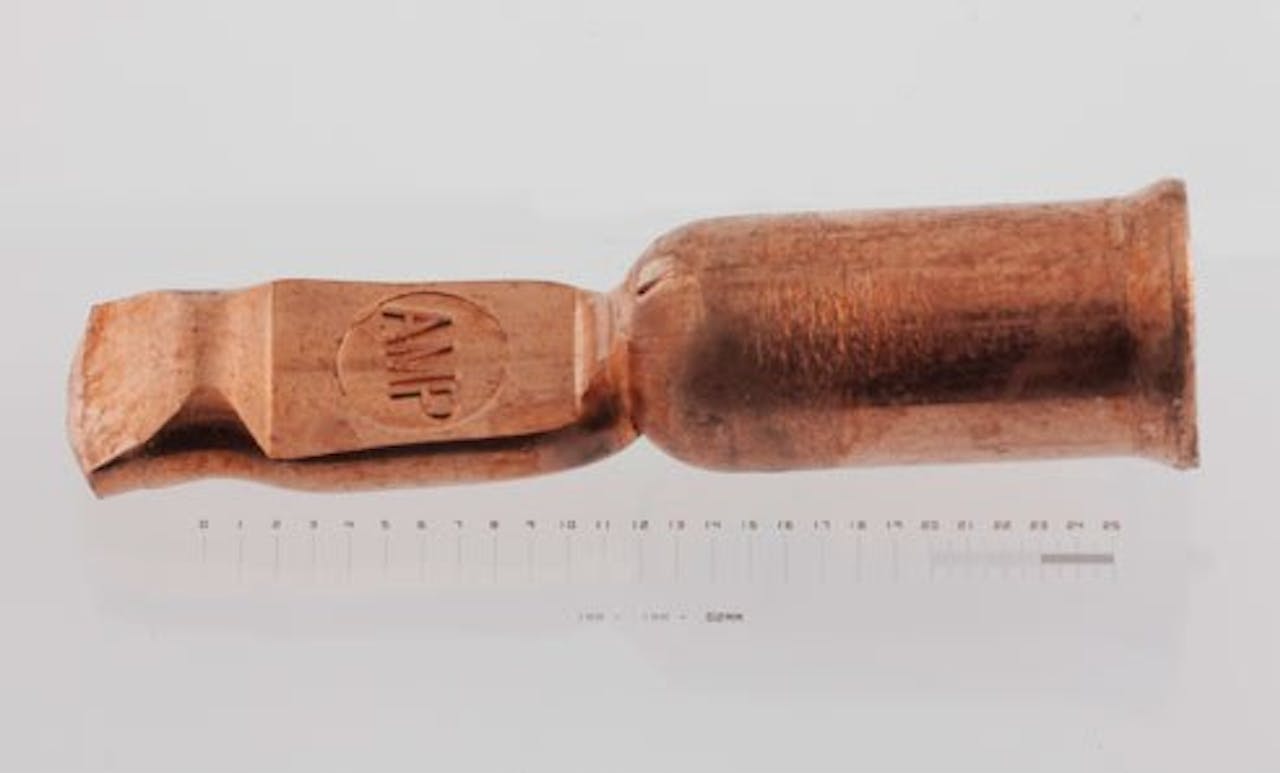
Advantages:
- Material waste is minimal.
- The part is formed from copper round wire.
- Production speeds are high allowing for low production costs. Much faster than machining.
Cold Formed Cup with U Bend
Material: 70% CCFe (copper clad steel; 70% conductivity) .020" diameter.
Manufacturing Method:
- Cold Headed and bent on a slide machine.
Notable Features:
- Cold headed cup shape formed on the end of a .020" (.5mm) diameter wire. This cup shape is meant to accommodate a tiny LED chip and reflect light as a flashlight reflector.
- The metal mass that is in the cup shape is extraordinarily large for the .020" diameter beginning wire diameter.
- The U-shape terminal leads are attached to the cup as one piece.
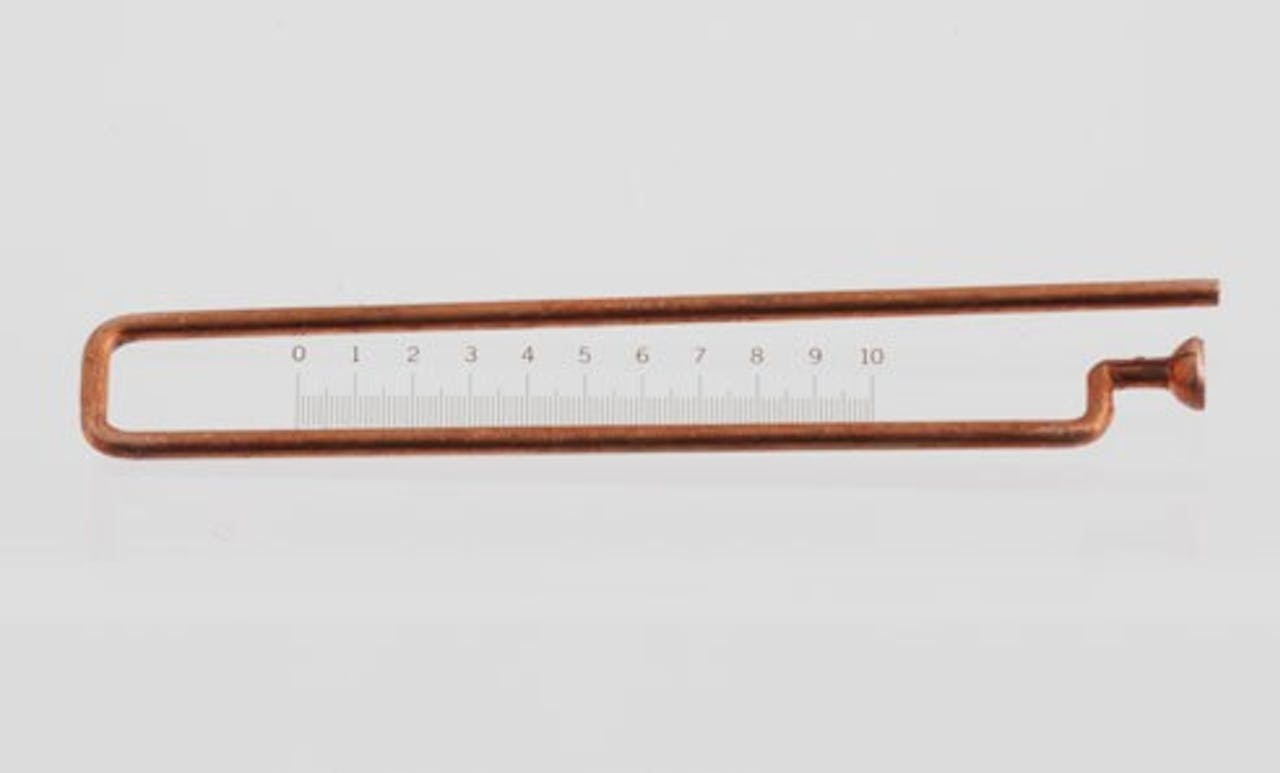
Advantages:
- This high-volume CCFe (clad wire) part can be handled magnetically due to the steel core.
- The steel core provides a very stiff wire making the part handleable without deformation/bending.
- The heavy copper outer layer gives the wire 70% conductivity (ie: 70% of the conductivity expected from a pure copper wire).
- The highly reflective cup feature is manufactured to a special inside shape for reflecting the LED light from a specific shaped angle.
Fuse Component
Material: Low carbon steel barrel plated with electroless nickel plate.
Manufacturing Method:
- Cold-formed on a header machine.
Notable Features:
- Dimensionally small & thin: .041" (1 mm) thick, .089" (2.2mm ) major diameter, .012" (.3mm) wide pedestals.
- Radiused tip: tightly controlled.
- Smooth/high surface finish.
- Electroless Nickel Plate.
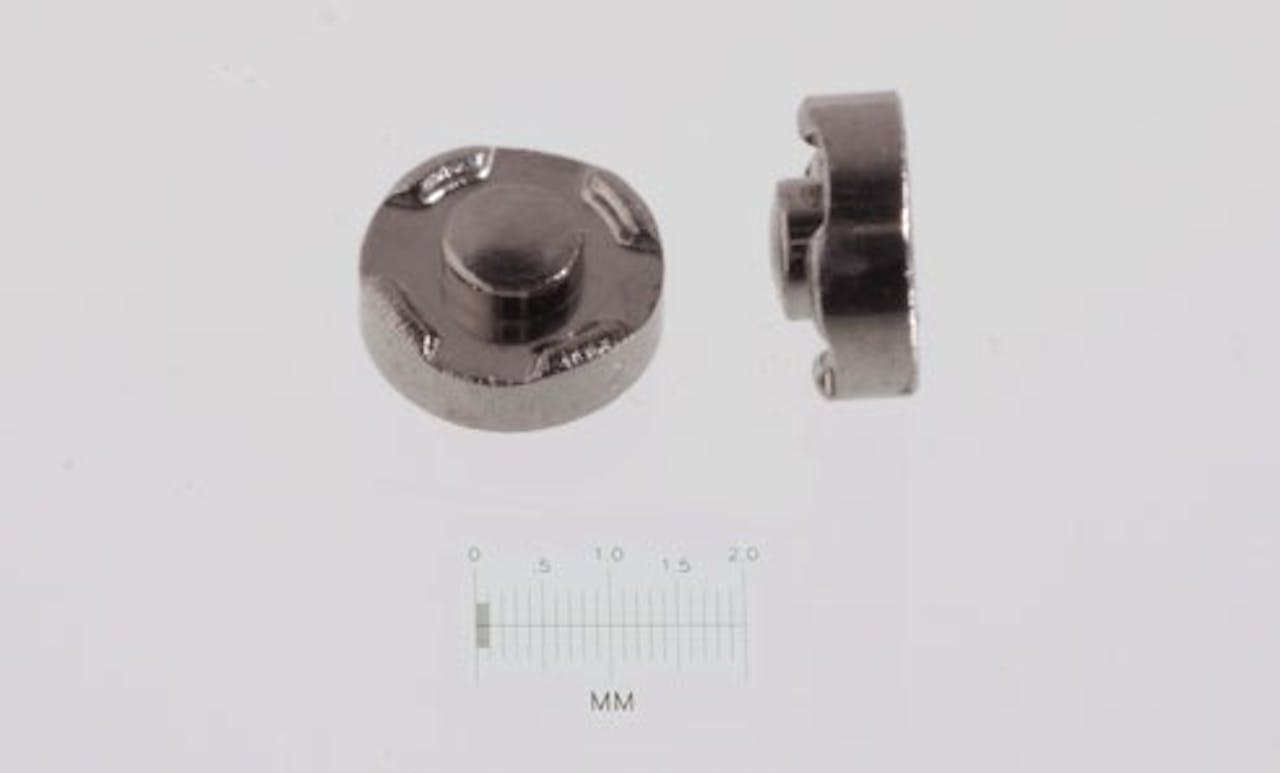
Advantages:
- Production speeds are high allowing for low production costs.
- The formation of the four pedestals is inexpensively formed by the cold forming (coined) process.
- High surface finishes attainable on a consistent basis.
Pure Silver Semiconductor Terminal Lead
Material: 99.99% pure Silver (Ag)
Manufacturing Method:
- Produced from coiled wire.
- Manufactured & packaged complete from the cold forming machine. No secondaries.
- Tooling designed & built in-house.
Notable Features:
- Oriented (in this case, heads up in vials) packaging: facilitating the loading procedure for customers assembly method.
Advantages:
- No machining lines or cut-off deformations present.
- Cost: No scrap generated. Important for precious metals and expensive alloys that generate poor scrap revenue.
- Oriented packaging saves cost for customers eliminating one step in assembly.
Our Manufacturing Locations
Have Questions?
Talk with our experts today and let us help you figure out the best solution.